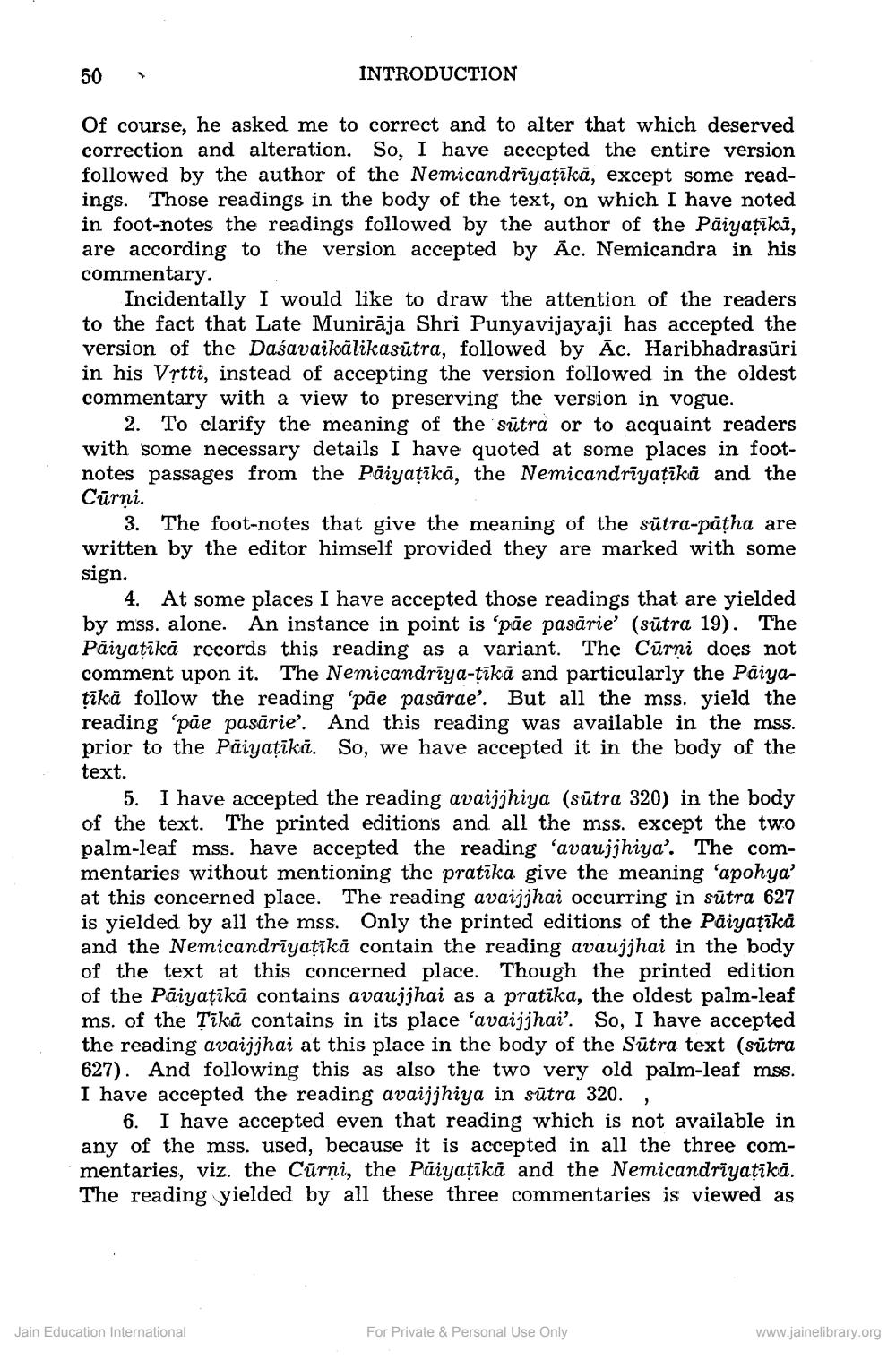________________
50
INTRODUCTION
Of course, he asked me to correct and to alter that which deserved correction and alteration. So, I have accepted the entire version followed by the author of the Nemicandrīyatīkā, except some readings. Those readings in the body of the text, on which I have noted in foot-notes the readings followed by the author of the Päiyatīki, are according to the version accepted by Ac. Nemicandra in his commentary.
Incidentally I would like to draw the attention of the readers to the fact that Late Munirāja Shri Punyavijayaji has accepted the version of the Daśavaikälikasūtra, followed by Ac. Haribhadrasūri in his Vrtti, instead of accepting the version followed in the oldest commentary with a view to preserving the version in vogue.
2. To clarify the meaning of the sutra or to acquaint readers with some necessary details I have quoted at some places in footnotes passages from the Pāiyatīkā, the Nemicandrīyaţikā and the Cūrni.
3. The foot-notes that give the meaning of the sutra-patha are written by the editor himself provided they are marked with some sign.
4. At some places I have accepted those readings that are yielded by mss. alone. An instance in point is 'pāe pasărie' (sūtra 19). The Päiyatīkā records this reading as a variant. The Cūrni does not comment upon it. The Nemicandriya-tīkā and particularly the Paiyatākā follow the reading "pāe pasārae'. But all the mss. yield the reading “pāe pasārie'. And this reading was available in the mss. prior to the Pāiyaţikā. So, we have accepted it in the body of the text.
5. I have accepted the reading avaijjhiya (sūtra 320) in the body of the text. The printed editions and all the mss. except the two palm-leaf mss. have accepted the reading "avaujjhiya'. The commentaries without mentioning the pratika give the meaning 'apohya' at this concerned place. The reading avaijjhai occurring in sūtra 627 is yielded by all the mss. Only the printed editions of the Păiyaţikā and the Nemicandrīyatīkā contain the reading avaujjhai in the body of the text at this concerned place. Though the printed edition of the Paiyațīká contains avaujjhai as a pratīka, the oldest palm-leaf ms. of the Tīkā contains in its place 'avaijjhai'. So, I have accepted the reading avaijjhai at this place in the body of the Sūtra text (sütra 627). And following this as also the two very old palm-leaf mss. I have accepted the reading avaijjhiya in sūtra 320.,
6. I have accepted even that reading which is not available in any of the mss. used, because it is accepted in all the three commentaries, viz. the Curņi, the Päiyatīkā and the Nemicandriyatīkā. The reading yielded by all these three commentaries is viewed as
Jain Education International
For Private & Personal Use Only
www.jainelibrary.org




